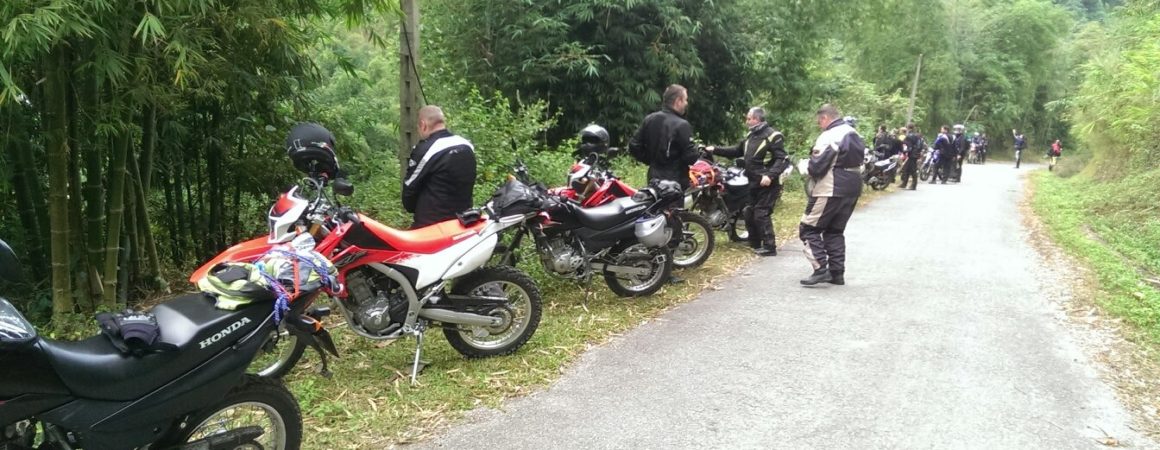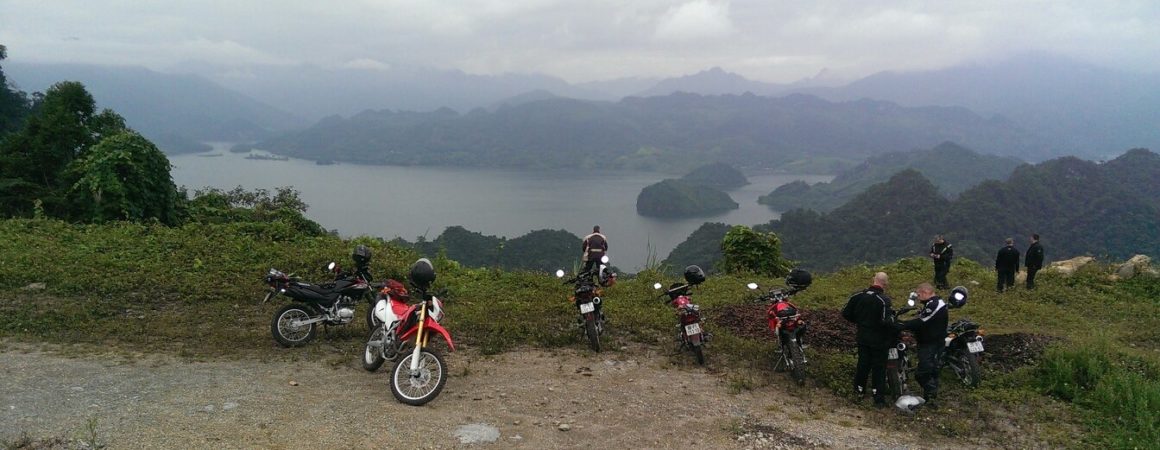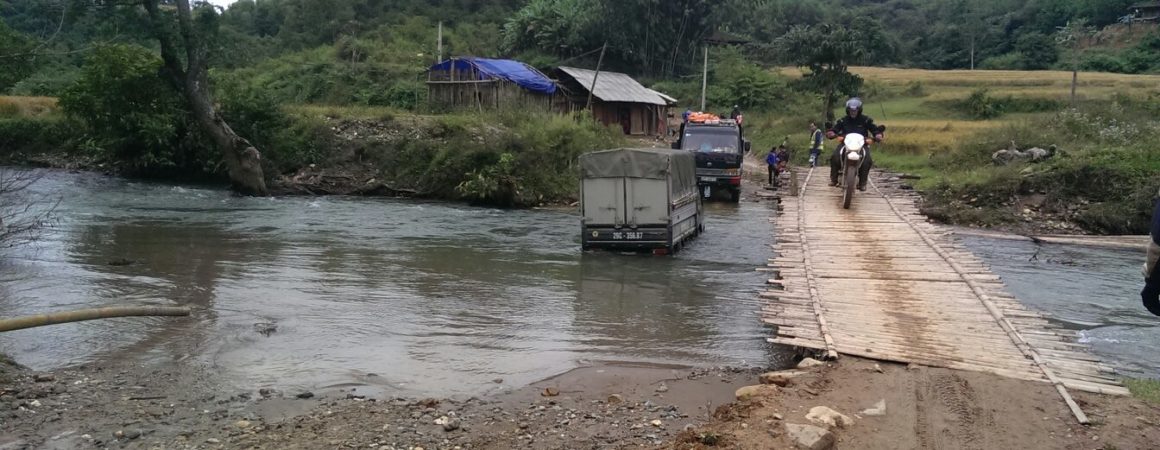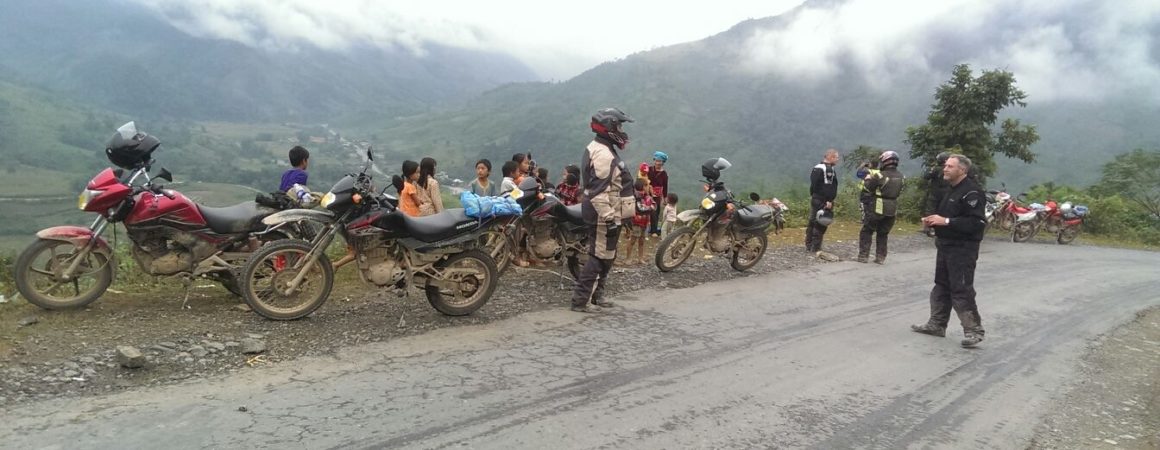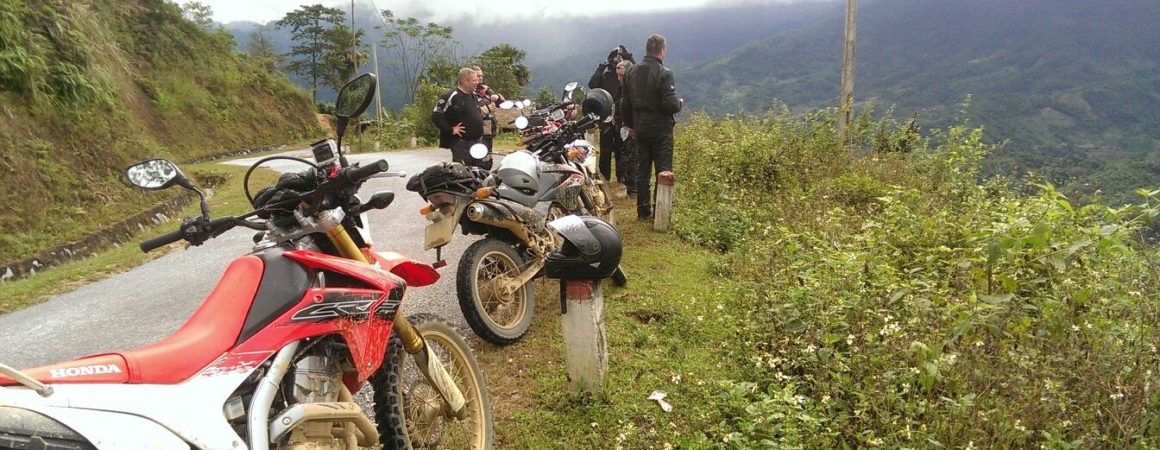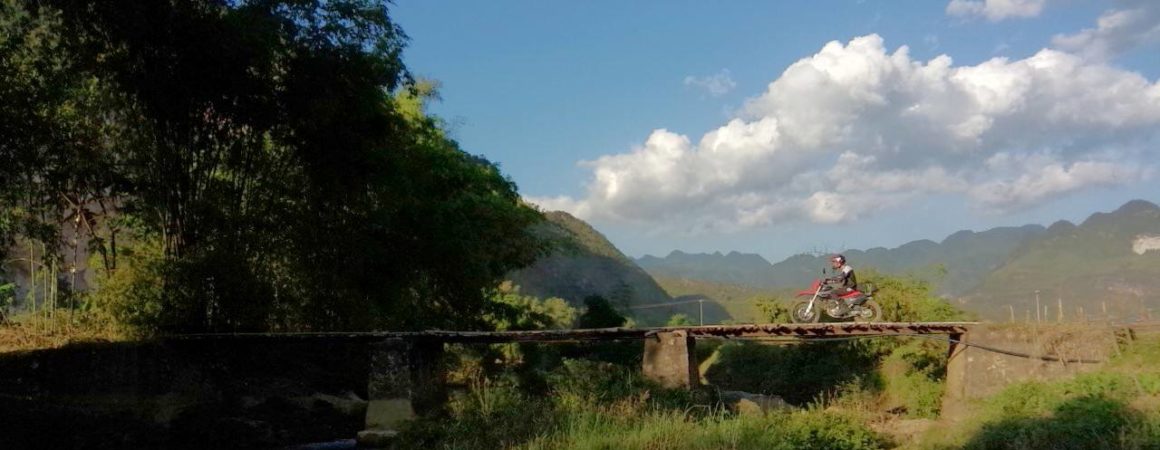First Aid’s Tips for Tour Guide
Basic First Aid Instructions are so vital as it is the person on the spot, not a doctor or ambulance officer, that will clear a blocked airway and do CPR, stop bleeding or assist someone injured to become safe.
Then there is the more common issues of nosebleeds, sunburn, cuts, bites, stings and the like that need first aid treatment.
Knowing basic first aid instructions allows you to quickly determine a person's physical condition and the correct course of treatment.
In a number of scenarios, basic first aid instructions can be the complete treatment and then there are more life threatening conditions that may only need basic actions to save a person's life.
The below links will help by teaching you about the details of emergency conditions and many other injury treatments.
Or if you want to go to a specific first aid issue on our web site simply use the search option below:
1. What to do with severe bleeding:
Quick Summary:
Check the person's breathing and pulse. If needed apply CPR.
Then the immediate things to do are :- 1. Call for help and call emergency services 2. Apply gloves if available 3. Apply pressure to the bleeding wound 4. And elevate above the heart. Injuries permitting 5. When the severe bleeding slows down or stops tie the padding firmly in place. 6. Montior DR-ABCD's – (New version of ABC's). If needed apply CPR.
**Please review the below explanations of these steps.**
Here is a more IN-DEPTH EXPLANATION of the above steps to treat severe bleeding:-
If possible, before you touch the bleeding area wash your hands with soap and water. DO NOT wash the wound except in the case of a dog bite or chemical burn.
If you have synthetic gloves "fantastic". Use them to protect you from possible transmission of the unfortunate nasties that can be in peoples' blood (which is the primary reason why gloves are used in these situations). Otherwise avoid coming in contact with blood if possible which is easier said then done.
You may need to remove or cut clothing so you can see the wound and make an assessment.
If the severe bleeding is from the trunk of the body and organs are showing or have come out do not push them back in. Cover the wound with a dressing to help prevent foreign contaminates entering the area. It is very difficult and usually not advised to apply pressure around organs.
At this point the priority is to stop the severe bleeding so don't probe around the wound removing objects or cleaning at this stage. The only time to remove debris or objects is if they are on the surface of the wound and are quickly and easily removed.
If exposed organs are not involved then apply DIRECT PRESSURE on the wound (but do not apply direct pressure on penetrating objects see below).
* NOTE:– the purpose of applying direct pressure is to help the blood form a clot at the wound site. This is the body's natural way of forming a "cork" to block the blood from exiting. Much in the way a cork stops wine from leaving a bottle.
If possible use a dressing pad but if that is not available be creative by using things such as a clean towel/s, clothing like clean socks or even a clean nappy (diaper) anything that will absorb the blood and help with applying pressure. If you can't locate anything to use straight away then just use your hand.
DO NOT apply pressure directly to penetrating objects. AND DEFINITELY do not remove large or deeply embedded objects as this can make the bleeding worse or cause more damage (at times these objects may actually be assisting in reducing the severity of bleeding by blocking a damaged blood vessel). Leave their removal to medical professionals.
And certainly do not apply disinfectant or the like as wound care is secondary at this stage. Your time is best spent in stopping the flow of blood.
ELEVATE – (if injuries permit) Elevation assists in reducing blood flow to the area therefore reducing pressure at the site and helps give clotting a better chance to form.
Hold continuous pressure for at least 20 minutes before you check to see if bleeding has stopped.
If blood seeps through the dressing do not remove it as this may dislodge the clot resulting in you being back to square one where the blood flows freely again. You may need to make sure you are applying pressure at the correct point and "peek" under the pad rather than remove it altogether for a look.
Then put a second padding on top of the first and re apply direct pressure.
IF injuries allow, lie the person down. This is for the reasons below:
it can make it easier to elevate the effected area. it can help reduce blood flow at the wound site. the body's response will be to "faint/fall down" in an attempt to get the person to lie flat. This makes it easier for the heart to get blood and therefore oxygen to the brain as it is not working "against" gravity. So if injuries allow try and have the head lower then the heart to help this process. some people find seeing blood difficult and can end up getting "wobbly" and faint, so if they are laying down then they do not fall down. This is better for everyone.
If it is difficult to maintain pressure with your hand you can bind the wound with a bandage or the like (strips of cloth etc) and the bandage can be held together with tape of any sort if available. The important thing is that sufficient pressure is applied to help the clotting process.
If the bleeding has not been controlled by the above steps then go to first aid for uncontrolled bleeding for what to do next.
When the severe bleeding slows down or stops tie the padding firmly in place. If you have a bandage apply it but if not be creative again and use things like a scarf, a neck tie or strips of cloth. If it is difficult to tie or you prefer to tape the end of the "bandage" down then use any type of tape that will adhere to the material, or wind the tape completely around so it can adhere to itself. Electrical tape can work a treat. But whatever you use do not bind/tie/tape it so tightly that blood flow is so restricted that the area past the wound does not receive the vital blood that it needs. A slow pulse below the area and/or bluish fingers or toes are signals that the bandaging may be too tight and impeding circulation.
Otherwise Immobilise the injured part. There are a variety of ways to do this such as using another limb with an injured leg or the trunk if the arm is injured. So just use common sense as the principle is to stop the area from moving around and re-triggering the bleeding.
If possible cover the person with a blanket. Do this in a way that does not interfere with access to the wound so it can be observed in case it starts bleeding again.
Observe for Shock as it is highly probable as a result of severe bleeding.
Reassurance goes a long way in helping the injured person feel secure and safe.
Monitor DR-ABCD's (new version of ABC's). Stay with the person until medical help arrives. If you want a better understanding of CPR go to CPR Questions and Answers.
Keep checking the injury site to see that it is stable so the severe bleeding remains under control.
Do not give food or drink unless given permission by medical help.
2. First Aid for Cuts and Scrapes
Often cuts and scrapes can be treated at home, but more severe cuts require prompt first aid and may need medical attention.
QUICK SUMMARY:
Wash your hands with soap and water.
Put gloves on if available.
Apply firm but gentle pressure on the cut with a clean cloth or piece of gauze for about 20 minutes.
If possible raising the injured part above the person's heart to help slow the bleeding.
IF the bleeding is more severe and injuries allow, lie the person down.
If bleeding from a cut can not be controlled with gentle pressure go to First Aid for Severe Bleeding.
Once the bleeding stops clean the wound. (See below for how to do this.)
Apply a clean if possible sterile dressing if needed. For smaller cuts and scrapes you may only need a band-aid or a steri-strip or two (see below).
If you have any concerns seek medical help.
IN-DEPTH EXPLANATION of the above steps for first aid for cuts and scrapes:-
First Aid for Cuts and Scrapes – So what do I do?
If possible, before you touch the bleeding area wash your hands with soap and water.
If you have synthetic gloves "fantastic". Use them to protect you from possible transmission of the unfortunate nasties that can be in peoples' blood (which is the primary reason why gloves are used in these situations). Otherwise if possible avoid coming in contact with blood which is easier said than done.
* First Aid for Cuts – What about the bleeding?
head cut bleeding
Bleeding helps clean or flush out wounds. This is one advantage or purpose for bleeding which is helpful when there is debris or possible contamination.
Most small cuts or scrapes will stop bleeding in a short time but be aware that cuts on the face, head or mouth often bleed a lot because they are rich in blood vessels.
Typically minor cuts and scrapes will stop bleeding easily on their own.
If the bleeding does not stop apply firm but gentle pressure on the cut with a clean cloth or piece of gauze for about 20 minutes. The pressure should be continuous, so don't lift the cloth to check if the bleeding has stopped.
If possible avoid using tissues or similar items that leave small fibres in the wound as these "foreign bodies" can cause infection later down the track as well as prevent healing.
If blood seeps through the dressing do not remove it as this may dislodge the clot resulting in you being back to square one where the blood flows freely again. If bleeding is from a large area or more severe than first thought you may need to make sure you are applying pressure at the correct point and "peek" under the pad rather than remove it altogether for a look. Then put a second padding on top of the first and re apply direct pressure.
If the wound is on an arm or leg, raising it above the person's heart will help slow the bleeding.
IF the bleeding is more severe and injuries allow, lie the person down. This is for the reasons below:-
+ it can make it easier to elevate the effected area.
+ it can help reduce blood flow at the wound site.
+ some people find seeing blood difficult and can end up getting "wobbly" and faint, so if they are laying down then they do not fall down. This is better for everyone.
+ If bleeding becomes or is severe the body's response may be to "faint/fall down" in an attempt to get the person to lie flat. This makes it easier for the heart to get blood and therefore oxygen to the brain as it is not working "against" gravity. So if injuries allow try and have the head lower than the heart to help this process.
If bleeding from a cut can not be controlled with gentle pressure go to First aid for severe bleeding.
Or if it is spurting this usually means there is bleeding from an artery so if you have already tried the steps at First aid for severe bleeding then got to First aid for uncontrolled bleeding.
* First Aid for Cuts – Once the bleeding stops what should I do?
You will need to clean the cut. Flush the cut with clean water. If possible put the wound under running water or fill a tub with tepid water and pour it from a container or cup over the wound. If you are away from running water normal saline is ideal for wound cleaning.
* What is tepid water temperature?
Put your finger under the flowing water if you do not feel a difference in temperature of the water compared to you hand (so long has you have not had it under hot water for a while) you then have tepid water temperature. Another way of putting it is lukewarm so not warm and not cold.
First Aid for Cuts – How do I clean the wound?
Using just water or normal saline on the wound itself should be adequate to remove most debris or bacteria. If any debris like dirt, grass, hair etc. remain remove these with sterile tweezers or if not available use tweezers cleaned with alcohol.
grazed elbow
I find that water works fine to clean the surrounding area but you can use a mild soap if required, but don't get soap in the cut. Soap will only irritate the open wound and cause discomfort to the person.
Thorough wound cleaning reduces the risk of infection and tetanus.
* First Aid for Cuts – Should I use an antibiotic ointment?
This is up to you. Here are some things to consider:
Most minor cuts and scrapes will heal just fine without antibiotic ointment. These types of products don't make the wound heal faster, but they can discourage infection and allow your body's healing process to close the wound more efficiently.
Certain ingredients in some ointments can cause a mild rash in some people. If a rash appears, stop using the ointment.
An appropriate dressing and bandage can do pretty much the same thing.
* First Aid for Cuts – Should I use a wound dressing?
This depends on the wound and its size.
If it is a small wound and isn't in an area that will get dirty or be rubbed by clothing, you don't have to cover it. But if it is in an area that will get dirty (your hand say) or be irritated by clothing (such as your knee), cover it with band aide or a sterile non stick dressing and adhesive tape.
With larger cuts initially you will cover the cut with a dressing and bandage to prevent bacteria from getting in. Bandages can help keep the wound clean and keep harmful bacteria out. After the wound has healed enough to make infection unlikely a dressing may no longer be needed.
Change the dressing each day to keep the wound clean particularly if the wound is oozing. Ooze can be a breeding ground for bugs therefore cleaning the wound and changing the dressing daily is important in stopping the bugs partying and breeding in your wound.
* First Aid for Cuts – When are stitches needed?
Stitches may be needed for deep wounds so more than 1/4 inch (6 millimetres) deep.
or
If the wound:
+ is gaping.
+ has jagged edges.
+ has fat or muscle protruding.
* First Aid for Cuts – When should I use steri-strips or the like?
With smaller cuts you may be able to pull the edges together with a strip or two of surgical or cloth tape. These tapes may be called butterfly tape or Steri-Strips.
cut head steri strips
If the mouth of the wound does not pull together neatly see your doctor as soon as possible as correct closure of cuts within a few hours reduces the risk of infection and severity of scarring.
First Aid for Cuts – What should I do about scabs?
If the wound is small just leave them. Scabs are the body's original bandage. They form to protect wounds from dirt. It's best to leave them alone and not pick at them, tempting as that maybe, as the area can become itchy. They will fall off by themselves when healing has finished underneath them. Clever hey.
grazed knee scab
If the wound is larger, scabs can hide bacteria under them. The cheeky bugs can have a breeding party under the scab. Therefore larger wounds usually heal better with a clean, moist dressing that is changed daily. There are dressings that can remain on longer, these are called occlusive or semi-occlusive dressings, but have a medical professional recommend if this is best for you. You can buy them in drug stores/chemists over the counter without a prescription. So if you have seen a doctor or nurse they can tell you what dressing is best for the wound.
* First Aid for Cuts – When should I call my doctor?
If the below occurs at the time of injury:-
The cut has dirt in it that has not or won't come out.
The wound is jagged (as mentioned above).
The cut bleeds in spurts which would indicate that an artery is bleeding.
The bleeding doesn't stop after 10-20 minutes of firm, direct pressure.
The wound is on your face because medical professionals can treat the cut appropriately to help reduce scaring.
or
If the below occurs at a later stage:-
The edges of the cut gape open.
The cut becomes tender or inflamed.
The cut drains a thick and/or smelly fluid.
You have a generalised temperature. This may indicate infection.
The area around the wound feels numb or hot to touch.
Red streaks appear near the wound.
If it's a deep cut or a puncture wound and you haven't had a tetanus shot in the past 5 years get the booster within 48 hours of the injury.
Some points to note about a severely bleeding cut
Do not try to clean a major wound
Do not remove deeply lodged debris
Do not breathe on an open wound
Do not push back exposed body parts
Please refer to First Aid for Severe Bleeding for more on severe bleeding.
Also when you need to give first aid for cuts making a good assessment when you have someone bleeding is vital. Having an understanding of bloods appearance and function can make all the difference to the end result. So let's find out more about blood and bleeding…
3. First Aid for Shock
Giving First Aid for Shock and saving someone's life is the priority over dealing with a non life-threatening injury that may have caused shock in the first place.
The first step in First Aid For Shock is
Call emergency services (either you or someone else, if there is someone available) In Australia 000 America 911 the emergency services number in your country may be different.
Ambulance
The most important thing to do is to try to maintain blood flow to the body's trunk and head. This is done by lying the person flat and raising their legs above their hips (6-12 inches or 15-30 cm). Provided they do not have injuries to their legs such as broken bones or the like.
If the bleeding is obvious then stop it with pressure. Either with direct pressure with a gloved hand if possible or with padding. If you can use padding and a bandage to apply pressure to the area or improvise with such things as towels or a jacket that can be used to create compression. This advise maybe be unnecessary but were possible use clean materials to help reduce the risk of infection to the person. For further information on First Aid for Bleeding click here.
If you can see the blood oozing through what you have applied then apply more padding and bandaging. Do not remove the original compression as this may remove some of the clotting that the body has started to create at the site and will increase the flow of blood and then you are back at square one.
Then consider warmth. Cover the person with a blanket to keep the body from losing what heat it has.
Encourage rest and reassure the person that help is on the way.
Now if the person becomes (or is) Unconscious:-
If an extra person is available get them to call emergency services (If you have contacted them previously then advise them of the persons decreased condition).
Assess ABC. AIRWAY, BREATHING, CIRCULATION – if the person goes into or is in cardiac arrest move to performing CPR.
recovery position
Being able to breathe takes priority over any other treatment so if they are struggling to breath place them in the recovery position. If they maintain their breathing continue other treatment that is needed with the person in this position.
4. Burns First Aid:
Burns First Aid – Burns are horrible to see and when the skin is burnt not only is it destroyed but, depending on the extent and area affected, the deeper tissue and even bones can be damaged. Before giving burns first aid the depth of the burned area needs to be determined.
second degree burn, Burns First Aid
You may feel like freaking out at this stage but there are only 2 main treatment approaches for applying First Aid to Burns. They are separated into Minor and Major Burns.
So it may not be as difficult as you could have first thought.
Minor burns are first degree burns and small second degree burns (smaller than 3 inches or 7.5 cm diameter).
Major Burns are second degree burns larger than the persons abdomen or the area of their hand spread out (larger than 3 inches or 7.5 cm diameter) as well as full thickness burns.
The medical classification is as follows:-
1. First degree (superficial thickness) are where only the outer layer of skin is affected. They can be painful (mine always have been) there is also redness and at times swelling.
Burns first aid, hot glue gun, second degree burn
2. Second degree (partial thickness- superficial or partial thickness – deep) are where the outer and the underlying skin are affected. Now these no doubt cause pain, more intense redness, splotchy appearance, swelling and blistering.
3. Full thickness are called third degree (and at times forth degree). These extend into the deeper tissue and involve all layers of the skin and possibly the bone. Areas may appear dry, white or charred black. These may be numb or painless because the nerves in these areas have been damaged.
Out of the different ways we can get burnt Thermal burns are the most common such as
Fire – dry heat,
Heated objects – like metal saucepans or kettles,
Wet heat – hot liquids or steam.
Also
Cold – caused by prolonged contact with moderately cold objects (snow and cold air for instance) or brief contact with very cold objects such as dry ice.
Then there's:-
Friction – such as skin rubbed against canvas (my son did this once sliding down a inflatable slide. OOooh! it hurt).
Radiation – UV light from the sun is by far the most common burn associated with radiation – most of us have had sunburn at some stage. Other forms can be from tanning booths, radiation therapy (as patients who are undergoing cancer therapy), sunlamps, and X-rays.
Electricity – power lines (hopefully not many of us have experienced this) or within the home or work place.
Chemicals.
5. First Aid for Fractures
A fracture is a break or crack in a bone. It is not always possible to tell if a bone has been fractured. If you are not sure apply first aid for fractures as it is best to assume it is and treat it accordingly.
Quick Summary
If the broken bone is the result of major trauma or injury call local emergency services.
DO NOT encourage the casualty to move the injured part in order to identify a fracture.
DO ask questions of the casualty if they are conscious. The victim may have heard a bone snap at the time of injury.
Examine the injured area for swelling and/or deformities, lacerations and puncture wounds. Gently feel along the length of the bone for tenderness, swelling and deformities.
If you are not sure whether a bone is fractured, treat the injury as if it is.
Stop any bleeding. Apply pressure to the wound without causing further trauma. Dress wounds before applying a splint or sling.
Immobilise the injured area. Use a splint and immobilise the joints above and below any fracture.
Apply ice packs to help limit swelling and relieve pain.
Treat for shock if necessary.
Check for a pulse and sensation below the fracture area.
Also call for emergency help if:
The person is unresponsive, isn't breathing or isn't moving. Begin cardiopulmonary resuscitation (CPR).
There is heavy bleeding.
Even gentle pressure or movement causes pain.
The limb or joint appears deformed.
The bone has pierced the skin.
The extremity of the injured arm or leg, such as a toe or finger, is numb or bluish at the tip before you gave first aid.
You suspect a break or injury to the neck, head or back.
You suspect a bone is broken in the hip, pelvis or upper leg e.g the leg and foot turn outward abnormally.
First Aid for Fractures – In detail
NOW an In-depth explanation of the above steps for first aid for fractures:-
DO NOT encourage the casualty to move the injured part in order to identify a fracture – such movement is not necessarily a good guide for identifying a broken bone and could cause further damage to surrounding tissues as well as promote shock. In some cases a victim of a fracture is able to move the fractured limb with little or no pain. In other cases, motion will produce pain and the victim will refuse to move the injured limb.
DO ask questions of the casualty if they are conscious. Ask questions to determine how the accident occurred and the location of the injury. Ask now so you have information to hand over to medical help when they arrive. This can save them precious time.
If you are not sure whether a bone is fractured, treat the injury as if it is. Dislocations and sprains have the same treatment as first aid for fractures.
Fratured ankle
Stop any bleeding. Apply pressure to the wound without causing further trauma. Use a sterile bandage if possible otherwise a clean cloth or a clean piece of clothing will suffice.
Immobilise the injured area. Use a splint and immobilise the joints above and below any fracture. A splint can be any long firm object. A fracture is immobilised to prevent the sharp edges of the bone from moving and cutting tissue, muscle, blood vessels, and nerves. Immobilising fractures reduces pain and helps prevent or control shock.
Don't try to straighten or reposition the fractured limb. Splint the limb in the position you find it. Move the limb as little as possible while applying and securing the splint.
Splinting materials include splints, padding and bandages. Ensure that splints are long enough to immobilise the joint above and below the suspected fracture.
Before beginning first aid for fractures gather whatever splinting materials are available.
Splints may be improvised from such items as boards, poles, sticks, tree limbs, rolled magazines, rolled newspapers, or cardboard. If nothing is available for a splint, the person's chest can be used to immobilise a fractured arm and the uninjured leg can be used to immobilise, to some extent, the fractured leg.
Padding may be improvised from such items as a jacket, blanket, poncho or soft leafy vegetation. Put padding between the splint and the limb. Place extra padding at bony or sensitive areas.
Bandages may be improvised from belts or strips torn from clothing, towels or blankets. Narrow materials such as wire or cord should not be used to secure a splint in place.
Cravats or ties are used as securing materials. Cravats are made from muslin bandages or other soft material.You can improvise by cutting or tearing from pliable material such as a shirt or sheet if muslin bandages are not available. Use at least four ties (two above and two below the fracture) to secure the splints. The ties should be non-slip knots and should be tied away from the body on the splint. Do not place a cravat directly under the fracture site.
The securing material should be tight enough to hold the rigid objects securely in place, but not so tight that it interferes with blood circulation.
For arm fractures a sling can be improvised with material such as a piece of cloth, a belt and so forth. Use it by suspending it from the person's neck to support their fractured arm. Slings may be improvised by using pieces of torn material such as clothing, towels and blankets. A triangular bandage is ideal for this purpose. Remember that the person's hand should be higher than their elbow and the sling should be applied so that the supporting pressure is on the uninjured side.
Apply ice packs to help limit swelling and relieve pain. Don't apply ice directly to the skin as this could cause frostbite — wrap the ice in a towel, piece of cloth or some other material.
Treat for shock. If the person feels faint or is breathing in short rapid breaths, lay the person down with their head slightly lower than their trunk and, if possible, elevate the legs injuries permitting.
Check for a pulse and sensation below the fracture. Check the injured limb for a pulse. An arm or leg with out a pulse indicates an emergency requiring immediate surgical attention. If this is the case, and you have not already done so, call emergency medical help immediately.
Lightly squeeze the person's fingers or toes of the injured part (unless you suspect a fracture or other injury in these areas) asking the person what they feel. Loss of sensation is a sign of nerve or spinal damage. In this case, do not move the person and call for immediate emergency medical assistance.
You can also check for nerve damage by asking the victim to wiggle his or her fingers or toes connected to the injured extremity. Unless they are injured in these areas the person should be able to produce some type of movement. Of course if the fingers or toes are injured, do not have the person attempt to move them.
Some DO NOT's when applying first aid for fractures
DO NOT Massage the affected area
DO NOT Straighten the broken bone
DO NOT Move without support to broken bone
DO NOT Move joints above or below the fracture
DO NOT Give oral liquids or food
NOTE: Surgery maybe needed so it is best that the person not consumed anything for minimum of 6 hours prior to having anaesthetic. The reason for this is if the stomach has contents in it they can exit the stomach and be inhaled into the lungs or remain in the throat and cause difficulty breathing during the operation. Neither the patient nor the medical staff need this complication during surgery.
6. Heartstroke / Heat Exhaustion:
When temperatures rise so does the risk of Heatstroke and Heat Exhaustion. Being outdoors in hot humid weather can quickly lead to dehydration.
First Aid for Heatstroke
Heat stroke can be fatal and requires immediate medical attention.
Common causes of heat stroke are:
Prolonged exposure to heat and sun
Dehydration
Prolonged or excessive exercising
Excessive clothing
Signs of Heat Stroke
Severe headache
Rapid shallow breathing
Weak rapid pulse
Erratic behaviour
Extreme confusion
Dry, red and hot skin
Seizures
Unresponsive
Unconsciousness
First Aid Treatment for Heatstroke and Heat Exhaustion are much the same and is as follows:
If a person has a temperature of 40°C (104°F) or displays any of the symptoms of heat stroke seek medical help immediately
Remove the person from the heat
Remove clothing and have the person lie down
Elevate the feet slightly about 30 cm (12 inches)
Place a cold compress on the head, neck, groin and under the armpits
Use fans to cool down the body
If the person is awake you can place them in a cool (not cold) bath or if outside spray gently with a garden hose
If the person is awake give them sips of a salt beverage. Gatorade, or similar, or a teaspoon of salt in a 4 cups (1 quart) of water, drink half a cup every 15 minutes. Cool water is also acceptable
If muscle cramping is a problem massage the cramp gently until the muscle relaxes. Muscle cramps are extremely painful so be guided by the person as to how hard or gentle to be.
Watch for signs of shock (bluish lips and fingernails, loss of alertness) call your local emergency services immediately
Some DO NOT's:
DO NOT underestimate the seriousness of heat exhaustion and heat stroke especially in children.
DO NOT give a child or person aspirin or pain killers. These will not help.
DO NOT give salt tablets.
DO NOT give any liquids that contain alcohol or caffeine. These are diuretics and will hinder the body's ability to re-hydrate.
DO NOT use alcohol rubs on the body.
DO NOT give an affected person any liquids (including salt drinks) if the person is vomiting or losing consciousness.

